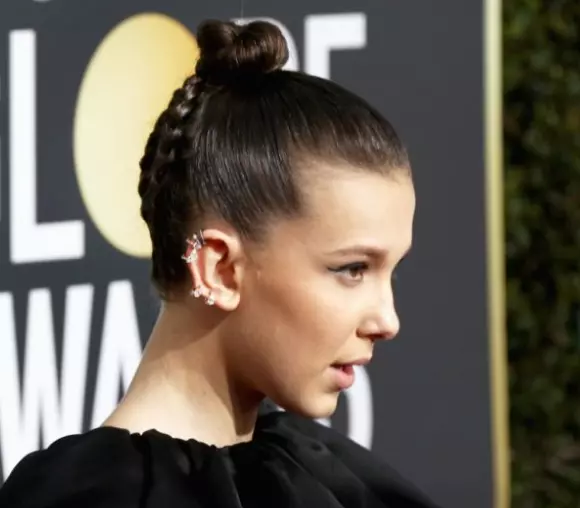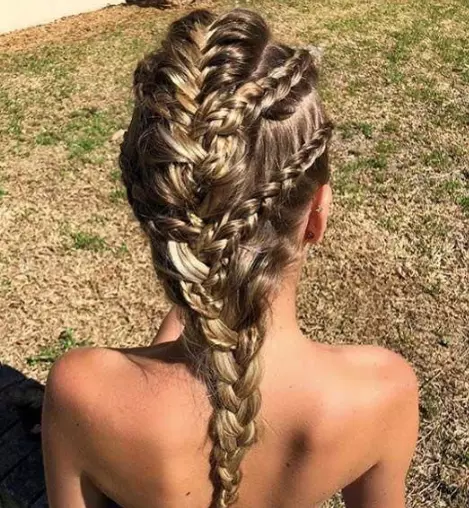Are Dutch Braids Cultural Appropriation?
For Europeans, Dutch braids are a hairstyle. The only individuals who accuse others of cultural appropriation are those who have contributed nothing to the world and go around spreading nonsense in an effort to deflect attention away from their own magnificence.
There has been a lot of controversy surrounding whether Dutch braids are a form of cultural appropriation. While the Kardashians have often been accused of stealing fashion designs from other cultures, the fact is that most cultures know that their hair should be braided. Tying the hair in braids requires no particular day, but it’s still an excellent style. The Kardashians have even stolen a lip plumping technique invented in the Netherlands.
Carneros
Many believe that Dutch braids are cultural appropriation, and while it is undoubtedly possible to appropriate a hairstyle, many believe these styles have no intrinsic value. Therefore, people must educate themselves on the history and culture behind a hairstyle before using it. Many white people think of Dutch braids as just another hairstyle, but in reality, they are close relatives of cornrows and box braids.
Cornrows and Dutch braids are both very similar in style and technique. The main difference is that the former are typically loose and form multiple braids. Cornrows are a more compact style and are done closer to the scalp. It can be cultural appropriation or an appropriate hairstyle. Cornrows are a form of Dutch braids that is not a culturally appropriate hairstyle. Cornrows are also similar to Dutch braids, as they involve creating multiple braids that are twisted to create a single hairstyle.
Cornrows and boxer braids are examples of cultural appropriation. While boxer braids are a very different hairstyle from Dutch ones, they share some characteristics. Boxer braids were once known as cornrows. Dutch braids are not crown rows. Instead, they are multiple small braids close to the scalp. While some styles use crown rows and Dutch braids as a look, others call them cornrows or french braids.
Lemonade braids are similar to corn rows and can be worn for several weeks. They require very little maintenance and can last as long as four weeks. They can be done on natural hair or extensions. This hairstyle is a perfect combination of style and comfort. They are not limited to Africans; they are famous worldwide and an excellent addition to any black woman’s wardrobe. You can even incorporate cornrows into your hairstyles.
In other cases, women complained about the emotional labor of explaining why a style or custom is not appropriate. They found the process exhausting. They said they did not have time to explain cultural appropriation. While a culturally appropriate product is not necessarily wrong, it may not be the right choice for a particular occasion. If you use a traditional style and intend to do it for commercial purposes, ask permission and be respectful. If you accidentally copy another culture’s symbolism, apologize and avoid such practices in the future.
Box braids
Dutch box braids resemble Hilary Swank’s hairstyle in the movie Million Dollar Baby. The Daily Mail claims that the hairstyle’s name comes from female boxers wearing cornrows during fights. However, it’s important to note that women and young girls have been wearing cornrows and Dutch braids for centuries. The actress apologized for using the style and even posted a new video to explain its origin.
Traditionally, box braids were a form of social activity for tribes and were often worn by women. Afar and Khoisan people wear them often. Other classic hairstyles that have become popular with Europeans are sleek ponytails, buns, low chignons, and French braids. Many African-American women also wear box braids. They claim to be culturally appropriate for work.

Some people take offense at cultural appropriation, which is wearing a culturally significant style by an ethnic group. While some cultures consider wearing a particular hairstyle to be an expression of a specific culture, others consider it a symbol of femininity. For example, while Dutch braids are not considered cultural appropriation, they are often confused with cornrows. However, people often confuse these hairstyles with cornrows and box braids.
The braided hairstyle has roots in ancient Egyptian and Native American culture. Historically, they have served as a sign of societal status, ethnicity, and religion. However, while Europeans began wearing short-styled hair in the nineteenth century, women of Native descent lost their ability to braid their hair. Janet Stephenson, an archaeologist, has documented the hairstyles of ancient Romans.
Dutch braids
In recent years, more people have been sporting the Dutch braid style. While many people take offense to this type of appropriation, these braids have long been a traditional part of African women’s hair. The style is not culturally offensive, but some people feel it is. It is also easy to copy. Whether or not you give credit to the originators is up for debate. But whether or not Dutch braids are a cultural appropriation is a complex question.
The Dutch braid first became popular in the United States in the 19th century and has become an increasingly popular hairstyle worldwide. These braids can be worn loose or pulled back into a bun or ponytail and can be accessorized with different hair accessories. Regardless of whether or not you choose to wear the Dutch braids, it would help if you considered their cultural significance. There is a debate on whether Dutch braids are a cultural appropriation and should be avoided by everyone.
Many women feel that the style is culturally insensitive, which is an understandable concern. While the style is flattering for women, it may not be very kind to some people. If you do wear Dutch braids, be sure to do them with care and respect. The hairstyle can also cause damage to the hair if it is kept in for too long. Some women feel that they are erasing the culture and history of black hair by appropriating it.
The main issue with the Dutch braid is that they are not culturally indigenous to the Netherlands. The French braid was also not a cultural appropriation but a result of colonial thinking. Many people associate things with French or Dutch, resulting from the colonial mentality of the people who imposed the hairstyle on their culture. If you want to incorporate Dutch braids into your style, start with a small section of your hair.
Moreover, braids have been worn by people of all cultures. Interestingly, they have been around since 3500 BC. The first recorded evidence of hair braiding in Africa can be found in the rock art of Algeria. These rock art depict women wearing them. For many years, sporting braids were considered a social event and a sign of societal status. For many centuries, braiding was a sign of one’s ethnicity, religion, and culture.
Lemonade braids
In the 19th century, the Dutch braid became popular in the United States and had since become a trendy hairstyle. These braids can be worn loose or pulled back into a bun. The braids look great when adorned with colorful hair accessories. Nevertheless, some have claimed that the hairstyle is cultural appropriation. There are several sides to this debate. Here are some facts. Are Dutch braids cultural appropriation?
One argument for blaming the Kardashians for stealing the look is that the style has no sacred value in their culture. The truth is that most cultures understand the importance of hair braids and are happy to use them to enhance their appearance. But some critics have argued that the Kardashians are cultural appropriators who have tried to re-appropriate African fashion designs and puffed up their lips to look “ethnic.”

Another argument for not blaming the Dutch for adopting the hairstyle is that they have no right to claim the origins of this look. Nevertheless, historical artifacts prove that various cultures had different forms of braids throughout history. For instance, the closest equivalent to the French braid can be found in ancient rock art from Algeria. However, these people did not take credit for the style because the ancient peoples of North Africa already used it.
Moreover, many people consider the styling of African hairstyles as cultural appropriation, especially when Mexicans adopt them without African heritage. However, suppose you have a rich African heritage. In that case, it is best to stick to the braided styles created by your ethnic group and acknowledge the community that originated these styles. Although globalization often benefits the privileged, sometimes it hurts the marginalized.


















